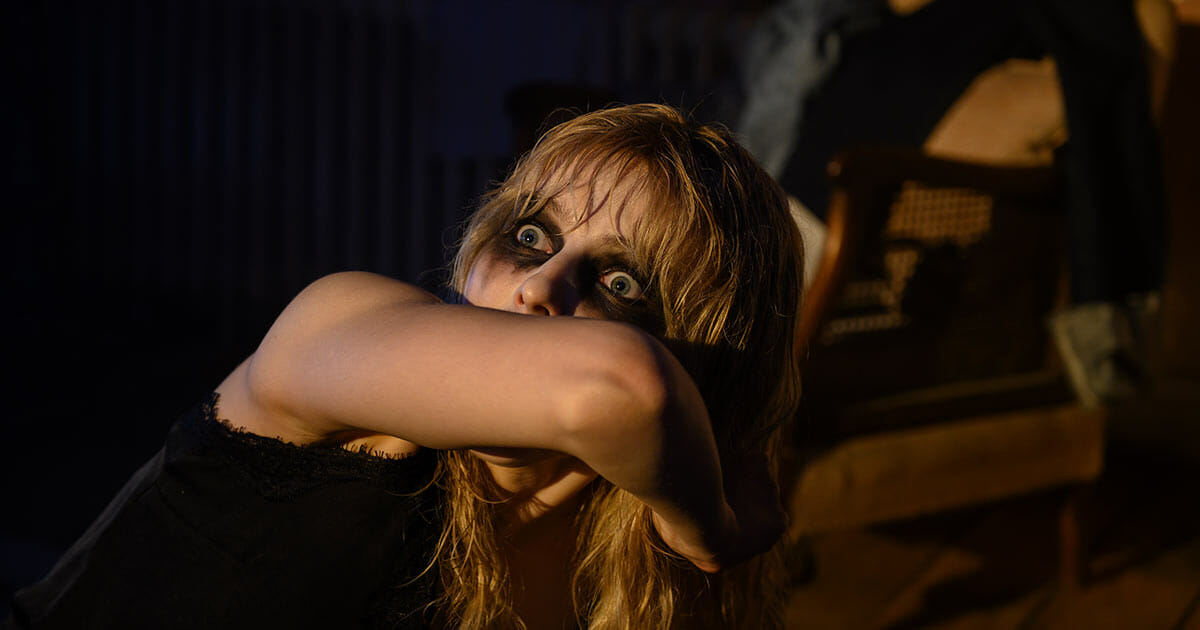Edgar Wright, the British wunderkind-turned-luminary who mastered the art of the genre comedy, is tired of satire. His return to horror is the furthest thing from Shaun of the Dead—it’s not a sendup of the genre; it’s a dive into it, and a deep one at that. Wright’s appreciation for the classics has taken on new life. From setting to story, Last Night in Soho is a descendent of 60s horror touchstones, namely Polanski’s Repulsion. It’s also a stab at feminist horror, which isn’t a genre you want near Polanski’s influence these days.
In the context of his work, Wright’s feminism has never surmounted dorm-chair expertise. Some of his movies make a point of showcasing women with agency, but they invariably end up serving a male protagonist—a reward for his bravery or the impetus for his growth as a man. Last Night in Soho, however, is his first movie with a female protagonist, and it was co-authored by Penny Dreadful writer Krysty Wilson-Cairns. The story follows Eloise (Thomasin McKenzie), a shy fashion student who can see visions of the dead. After she moves into an old West End apartment, her dreams morph into the memories of a previous occupant: Sandie (Anya Taylor-Joy), a singer in the Swinging Sixties who was exploited by the men who managed her.
READ ALSO: Villeneuve’s ‘Dune’ might be best version possible
The film’s horror is psychological—sociological, really. The leading men are depicted as villains right off the bat, leering eerily at the camera and stalking Sandie with barely disguised intentions. As Eloise loses herself in her dreams, her encounters with misogyny become more paranormal in nature: in the film’s clearest homage to Repulsion, disembodied arms burst through the walls and violently grope at her. For the most part, though, Last Night in Soho mires Eloise in the everyday horror of salacious men.
Keeping one foot in the real world emphasizes the malevolence of garden-variety misogyny, but it doesn’t fit Wright’s style well. His comedic efforts are singularly energetic, pushing and pulling and swiveling the frame to wring laughs out of every shot. There are countless video essays on how his frantic, formalist style sets a benchmark for visual comedy. It seems like a great fit for horror, too: just imagine those quick cuts and crash zooms shoving your face in grotesqueries at inescapable speed. Get the tone right and it could be terrifying. In contrast, Last Night in Soho is somewhat inert. Wright’s eye for shot composition is as keen as ever, but his signature movement has slowed considerably. Even when a scene demands energy, it feels like Wright is fighting to keep the camera from whip-panning. It’s never dull—an early dance scene is resplendent with camera trickery—but it’s often over-restrained.
The loving recreation of 1960s London helps liven up the frame. Neon lights brighten the night with a Giallo glare; perpetual rain keeps the colors saturated and vibrant. Characters keep insisting that London is a horrible place (code for “terrible men have lots of power here”), but the production design is anything but sinister. That’s delegated to the sound design—voices from Eloise’s dreams echo in her waking hours, a scream loops seamlessly into the wail of a siren. From a technical standpoint, Last Night in Soho isn’t showing any stitches.
When it comes to the story, though, it rips open its stitches and lets itself bleed to death. The last half hour is predicated on a twist that drains the film of any and all goodwill where feminism is concerned. The twist works on paper, but in practice, the pivot from “misogyny is the real horror” to something else entirely is fatally drastic. It’s like the film used feminist messaging as a smokescreen. That clearly wasn’t the intention, but the failure to anticipate how the twist might land is astoundingly thoughtless. Making it work would require careful, sensitive navigation, but the film just rams it through for shock value. It comes off as an inadvertent but vicious act of victim blaming—and even worse, victimizer sympathizing.
Its imprudence is best illustrated by a minor twist that precedes the big one. Without going into detail, the movie vomits up the sentiment that cops have vulnerable women’s best interests at heart, even if they go about their protective duties a little clumsily. Encroaching this territory the same year that Sarah Everard was kidnapped, raped, and murdered by a London police officer is a risky bet. Last Night in Soho loses that bet.
★★ (2/5)




